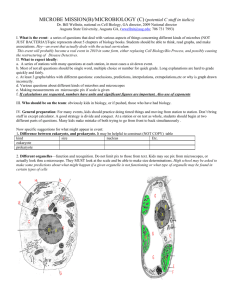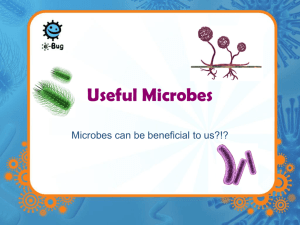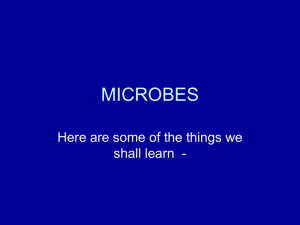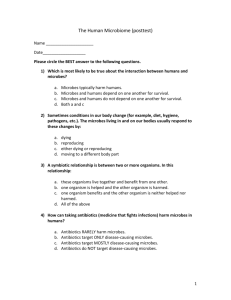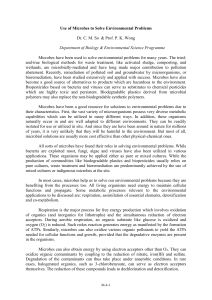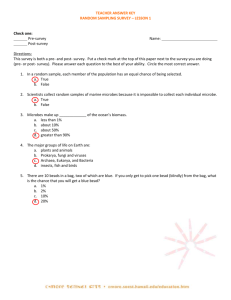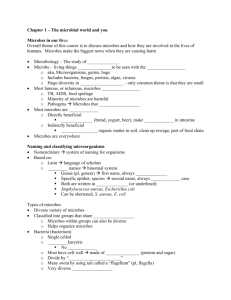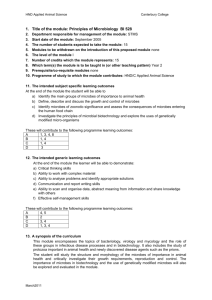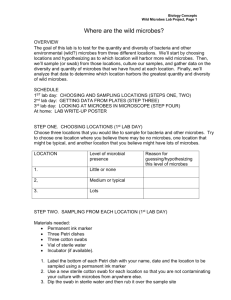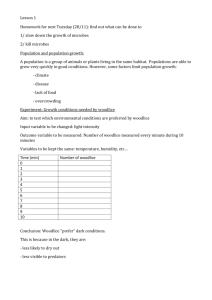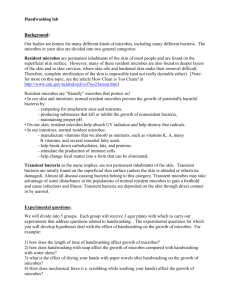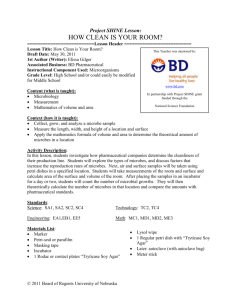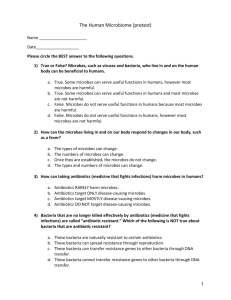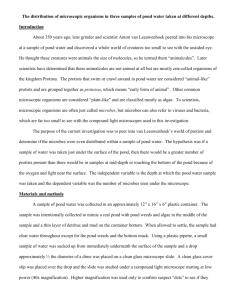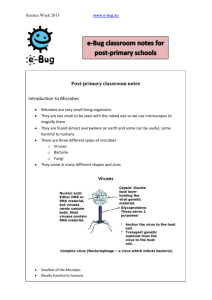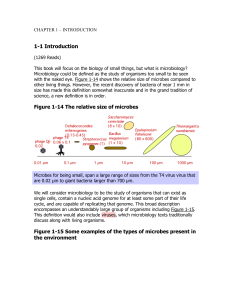Anw hoofdstuk 1 Infectious diseases now Infectious diseases are
advertisement
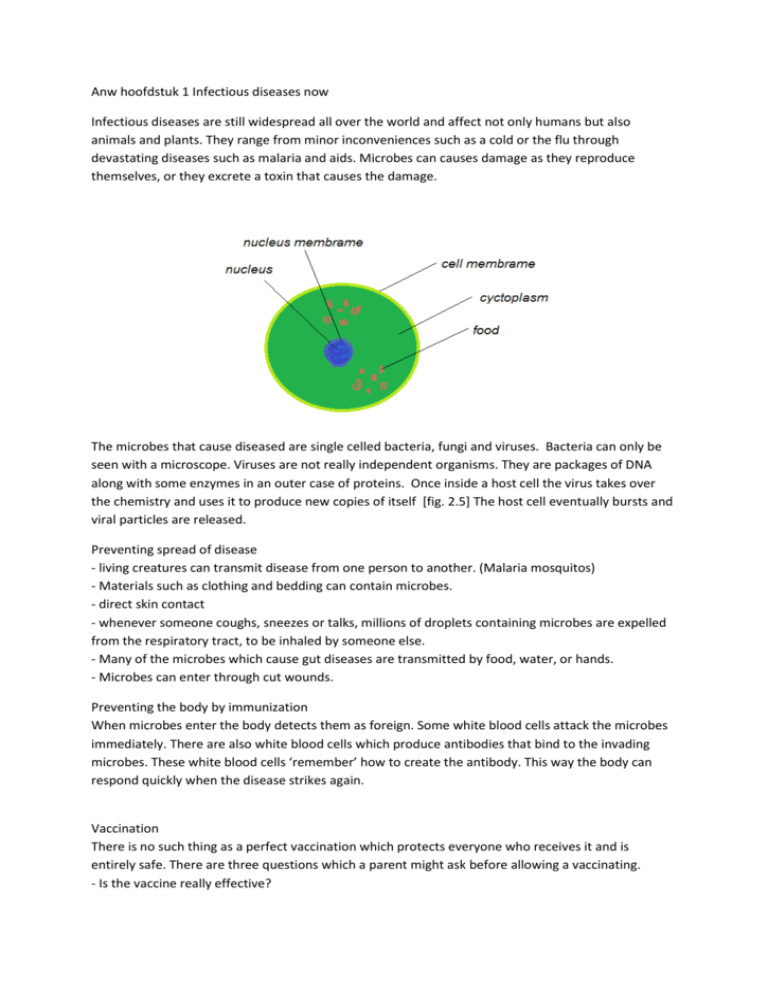
Anw hoofdstuk 1 Infectious diseases now Infectious diseases are still widespread all over the world and affect not only humans but also animals and plants. They range from minor inconveniences such as a cold or the flu through devastating diseases such as malaria and aids. Microbes can causes damage as they reproduce themselves, or they excrete a toxin that causes the damage. The microbes that cause diseased are single celled bacteria, fungi and viruses. Bacteria can only be seen with a microscope. Viruses are not really independent organisms. They are packages of DNA along with some enzymes in an outer case of proteins. Once inside a host cell the virus takes over the chemistry and uses it to produce new copies of itself [fig. 2.5] The host cell eventually bursts and viral particles are released. Preventing spread of disease - living creatures can transmit disease from one person to another. (Malaria mosquitos) - Materials such as clothing and bedding can contain microbes. - direct skin contact - whenever someone coughs, sneezes or talks, millions of droplets containing microbes are expelled from the respiratory tract, to be inhaled by someone else. - Many of the microbes which cause gut diseases are transmitted by food, water, or hands. - Microbes can enter through cut wounds. Preventing the body by immunization When microbes enter the body detects them as foreign. Some white blood cells attack the microbes immediately. There are also white blood cells which produce antibodies that bind to the invading microbes. These white blood cells ‘remember’ how to create the antibody. This way the body can respond quickly when the disease strikes again. Vaccination There is no such thing as a perfect vaccination which protects everyone who receives it and is entirely safe. There are three questions which a parent might ask before allowing a vaccinating. - Is the vaccine really effective? - What are the possible side effects? What will the authorities do if the child suffers from lasting damage cause by the vaccination? The discovery of penicillin. One summers day in 1928 Alexander Fleming was examining some petri dishes in which were growing bacteria. Some of the dishes contained a mould. He saw that the bacteria surrounded by the mould were killed. He realized the mould produced a substance which killed the bacteria. Fleming injected the substance in mice to see if it would harm them. It didn’t. By chance he had found the antibiotic. Ernst Chain and Howard Florey took up the investigation. The trials they held proves penicillin was very effective. During the 2nd world war a large amount of penicillin was needed, and production was shifted to the USA where large scale manufacturing processes were developed. Biochemists have now discovered how it works. The drug weakens the cell walls of the bacterial cell so that they burst and die. Human cells do not have cell walls so they are not affected. Tuberculosis Tuberculosis has always been a very common human infection. Infectious people can spread the disease by coughing, sneezing and spitting. TB can affect many areas of the body including the lungs and the bones, but the most common forms of TB affect the respiratory system. Symptoms are fever, night sweats, inability to eat and loss of weight. There is no fully effective vaccine yet. The vaccine that is used is made from a weakened form of a bacterium closely to the hman TB. However there are antibiotics that can cure the disease. People with HIV are very likely to get TB, since their immune system is weakened. TB is a common disease in third-world countries, but the amount of number of deaths has decreased. Influenza Hundreds of millions of people suffer from an influenza infection very year. Influenza, known as flu, is a common respiratory disease caused by the influenza virus. Influenza infects the cells lining the tubes leading to the lungs. The people most likely to die are the elderly and people who already suffer from a lung disease like asthma. Each year the various strains of the influenza virus are subtly different. But every so and often there is a major change in the virus. The previous vaccination now doesn’t work anymore, and a new one has to be produced. If a new influenza virus appears for which the human population has no immunity, there is a risk of simultaneous epidemics of the disease all over the world. This is a pandemic. Three massive pandemics happened in the 20th century. The biggest was the Spanish flu, at least 20 million people died.


